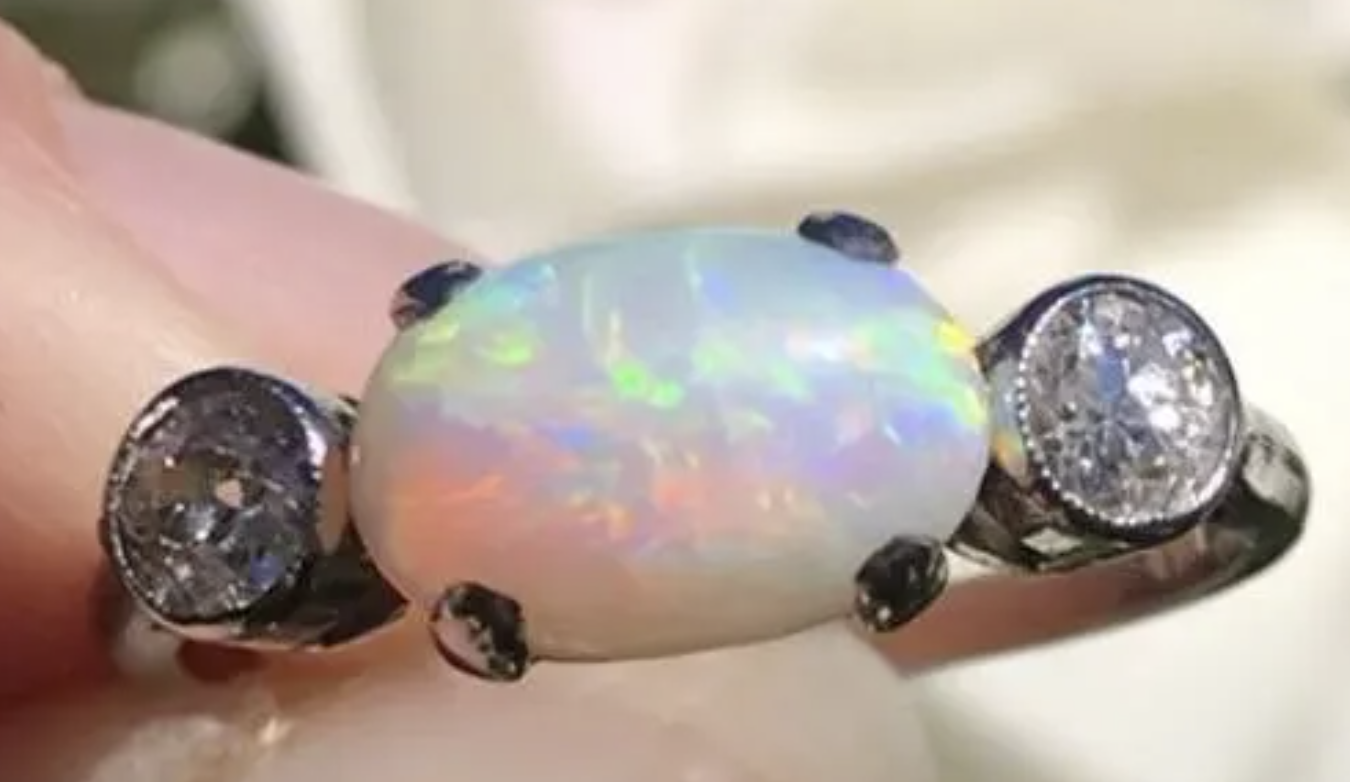The Irresistible Mystery of Opals: Beauty, Brilliance & the Art of Valuation
By Lisa Millwood | Expert Gemmologist & Valuer | www.lisamillwood.com
Opals: Nature’s Most Enigmatic Gem
No two opals are ever the same. That simple truth is what makes them both extraordinary—and extraordinarily challenging to grade.
Opals are a form of silica infused with water, and under rare geological conditions, they develop the extraordinary play-of-colour that defines a natural precious opal. This phenomenon—those shifting flashes of colour that dance across the surface—is what makes them one of the most mesmerising gemstones in the world.
A History Etched in Lore and Legacy
While Australia is now world-renowned for its opals, the gemstone’s early history traces back to European royalty. Some of the most exquisite historic jewellery—especially from Hungarian aristocracy—was set with opals sourced from the Slovakian deposits.
Australia’s opal story began in the late 19th century, and with it came an explosion of discovery. Boulder opals, black opals, and light opals began appearing in Queensland and New South Wales, eventually positioning Australia as the dominant player in the global opal market.
But not all press was good press—at least early on. The superstition that opals bring bad luck began with Sir Walter Scott’s 1829 novel Anne of Geierstein. In it, a character wears an opal brooch that loses its brilliance and causes her demise—tarnishing the gem’s reputation for generations.
Fortunately, the Arts and Crafts movement of the late 19th and early 20th centuries brought opals back into favour. Designers like René Lalique celebrated their organic brilliance. Cartier even featured them in their bold Art Deco creations. Around 1898–1900, opals even made their way into police uniform collars—a fascinating moment in fashion history, some of which is preserved in the Calouste Gulbenkian Museum collection.
Understanding the Modern Opal
The 8 Critical Factors (Opals Don't Follow a Chart)
Unlike diamonds, which are graded by the 4Cs, opals require a far more nuanced evaluation. There’s no universal pricing matrix—every opal is unique. The 8 key criteria are:
Brilliance – The most critical factor. An opal with no brightness, regardless of colour or size, will never fetch a high value. The best grade is AAA; the lowest is D.
Colour – Red is the rarest and most desirable; blue and purple are more common and therefore less valuable.
Body Tone – Ranges from black to grey to white. Black opals (with dark body tones) are the most valuable.
Transparency – In black opals, opacity adds value; in light opals, some transparency is desirable.
Pattern – Unique patterns can increase rarity and value. (See below)
Play-of-Colour (Colour Bar) – The thickness and depth of the colour layer, separate from the 'potch' (common opal with no colour).
Shape & Size – Cabochon ovals are the preferred shape, but due to the rarity, opals come in all forms. Larger stones generally carry more value.
Emotional Impact – At the end of the day, opal value is also personal. Their beauty often speaks directly to the heart.
The Language of Opal Patterns
Patterns in opal can be breathtaking—and incredibly specific. Some of the most recognised include:
Harlequin – Clearly defined squares or diamonds in geometric layout. Rare and highly prized.
Peacock – Feather-like flashes where colour changes within the feather lines.
Straw – Thin lines like blades of grass.
Chaff – Chopped-up, uniform flecks of colour.
Chinese Writing – Angular streaks resembling Chinese characters.
Rolling Flash – Colour that moves across the stone like a cat’s eye.
Star/Asterism – Radiating lines from a single point. Exceptionally rare.
Ribbon – Rolling, wavy bands of colour.
Flagstone – Irregular, paving-stone-like shapes.
Brush Stroke – As if applied with a painter’s brush.
Broadflash – Large patches of colour that shift when the stone is rotated.
Pinfire – Tiny, scattered flashes. Most common.
Types of Opals
Black Opal – The most valuable due to its dark body tone and vibrant colour contrast.
Light Opal – Includes white opals; less contrast but still stunning when brilliant.
Boulder Opal – Precious opal embedded in ironstone matrix. Unique and often very stable.
Crystal Opal – Transparent or translucent with internal play-of-colour.
Hydrophane Opal – Notably from Ethiopia, can absorb water and change appearance. Be cautious with wear—durability varies.
This antique Australian white opal with a pinfire pattern is one of the beautiful rings available at decoration jewellery
Wearing Opals
Opals are softer (5.5–6.5 Mohs) and require care. To prolong their life:
Avoid extreme temperature changes or prolonged water exposure.
Protect from hard knocks—ideal in pendants or earrings rather than rings.
Store separately in padded boxes.
Opals: A Work of Art
Ultimately, opals defy standardisation. They are as much emotion as evaluation. Their value lies not just in rarity or grading criteria but in the story they tell and the feelings they evoke. Each one is a work of art created by the Earth, and as a valuer, it's my privilege to interpret their language.
Whether you're a collector, a jeweller, or simply captivated by their beauty, opals offer something no other gem can—mystery, individuality, and a direct connection to the soul of the earth.
www.lisamillwood.com
